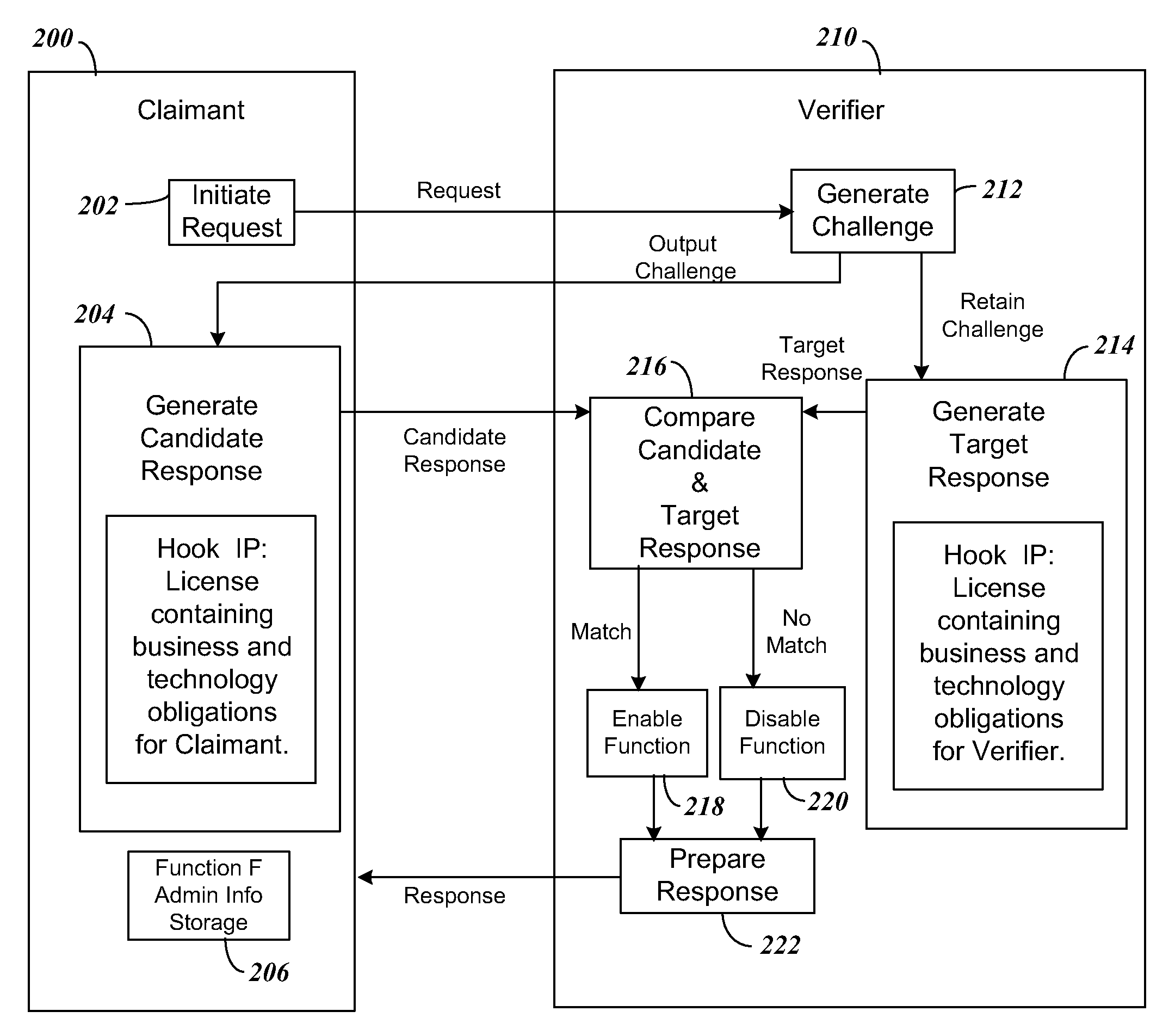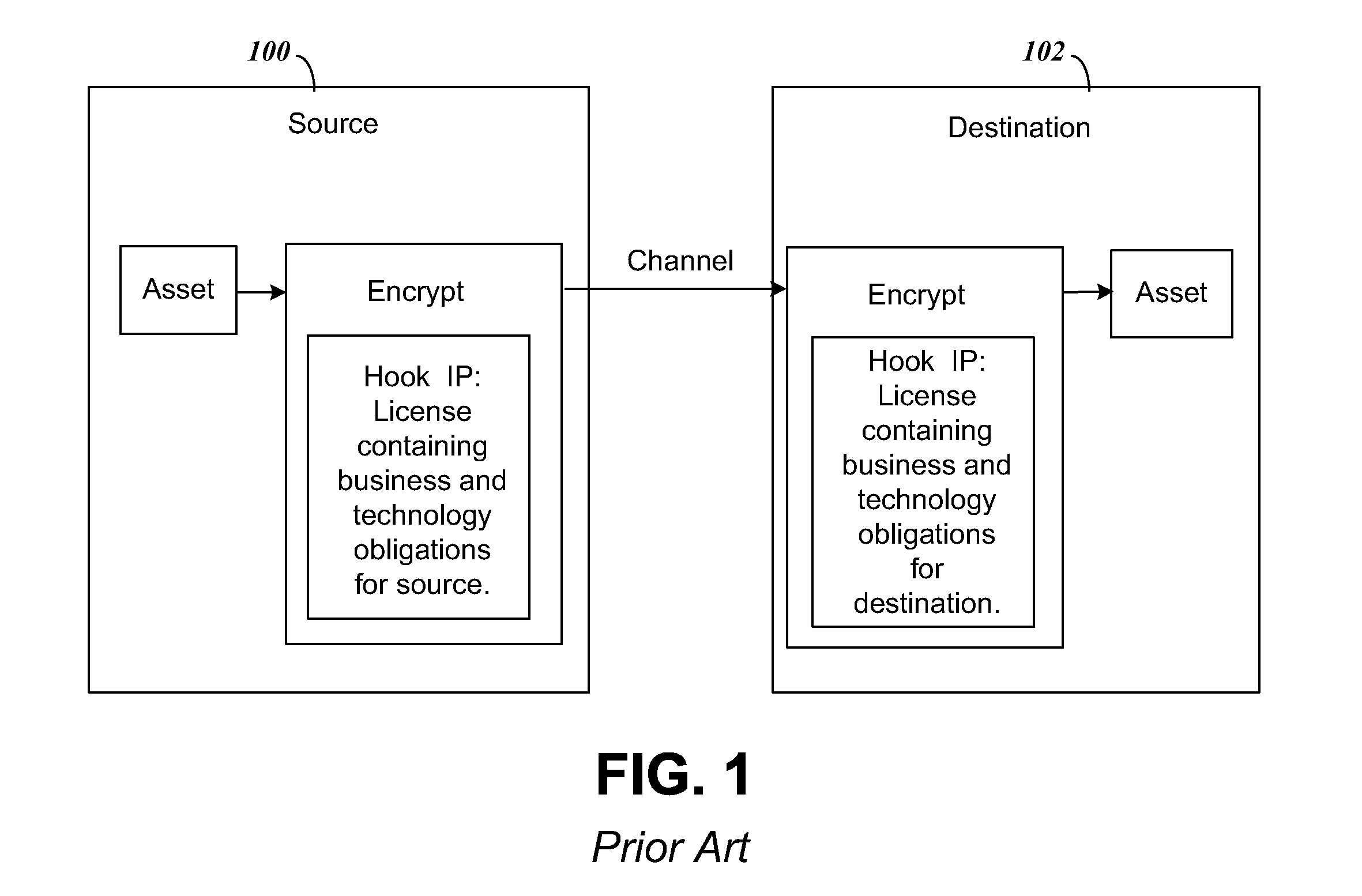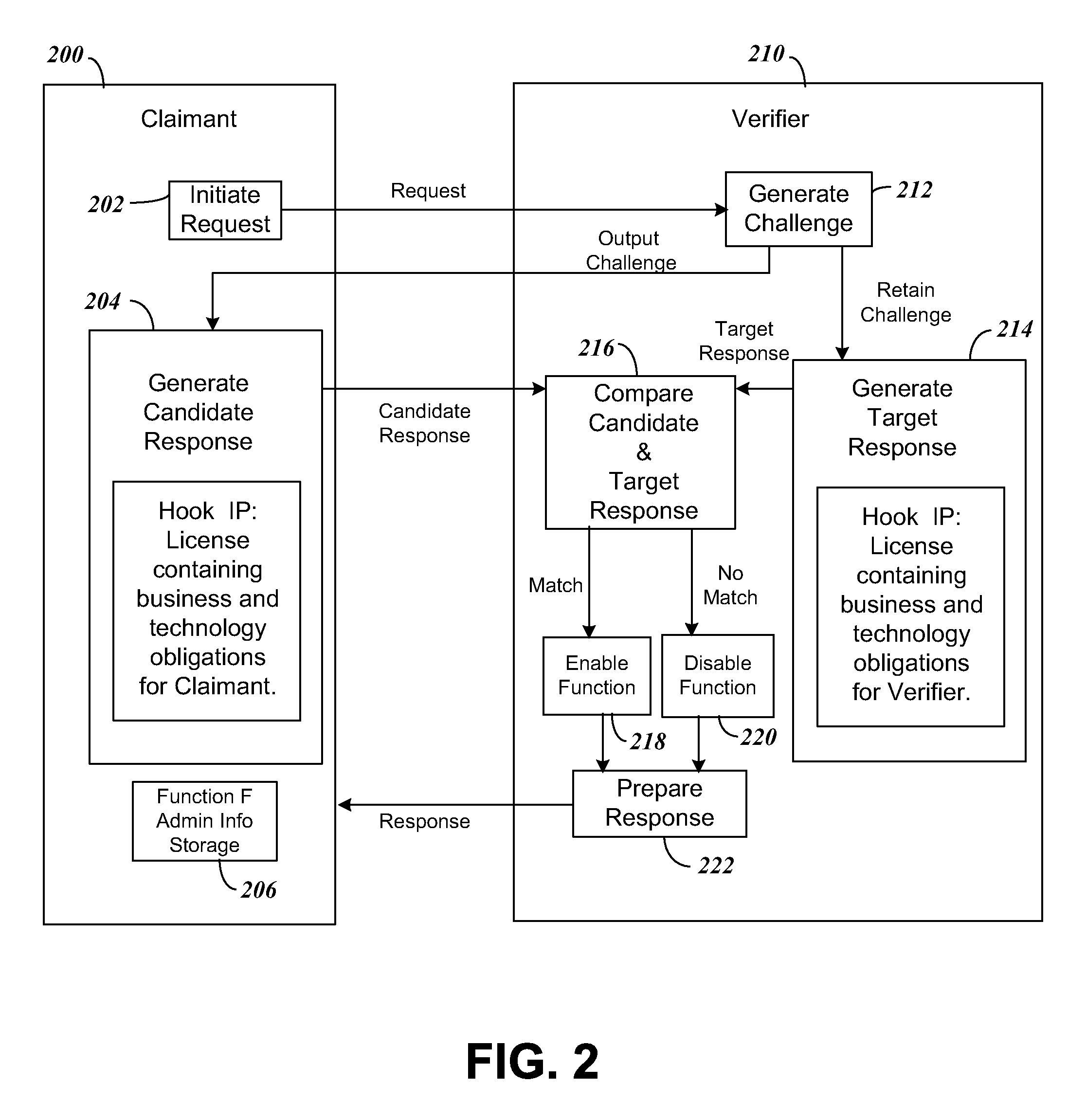Handshake protocol to control actors and functions in a cable set-top-box system to propagate acceptance of an IP license to securely authenticate software application program interfaces (APIs)
a technology of handshake protocol and actor, which is applied in the direction of selective content distribution, television system, instruments, etc., can solve the problems of ineffective asset protection, ineffective enforcement of enforcement, and little survivability
- Summary
- Abstract
- Description
- Claims
- Application Information
AI Technical Summary
Benefits of technology
Problems solved by technology
Method used
Image
Examples
example
Actor-Function Propagation in Cable System with CAS / DRM Provider
[0129]We now illustrate the concepts above that have Actors and Functions that propagate in a concrete manner, the example using a cable set top box and its software as an example. In the example, the following list of participants are included in the cable operator's ecosystem of vendors: (1) A License Entity(LICENT), equivalent to “Licensing Entity”. The LICENT imposes a Licensing Regime (LICREG) upon the entire ecosystem, including Robustness Rules, Compliance Rules, Penalty Clauses, and Liability. LICREG contains rights for Actors to act as Handshake Claimants or Verifiers, as appropriate. The LICENT has rights to license Hook IP “X,”“Y,” and “Z” (HIPX, HIPY and HIPZ) to use in propagating the LICREG to different parties. HIPX, HIPY and HIPZ are based on a cryptographic one way function used in the Handshake. (2) A CAS & DRM (CASDRM) provides an “Actor 1”, also known as the “Alpha Actor”. (3) Cable Middleware (MIDDL...
PUM
 Login to View More
Login to View More Abstract
Description
Claims
Application Information
 Login to View More
Login to View More - R&D
- Intellectual Property
- Life Sciences
- Materials
- Tech Scout
- Unparalleled Data Quality
- Higher Quality Content
- 60% Fewer Hallucinations
Browse by: Latest US Patents, China's latest patents, Technical Efficacy Thesaurus, Application Domain, Technology Topic, Popular Technical Reports.
© 2025 PatSnap. All rights reserved.Legal|Privacy policy|Modern Slavery Act Transparency Statement|Sitemap|About US| Contact US: help@patsnap.com



